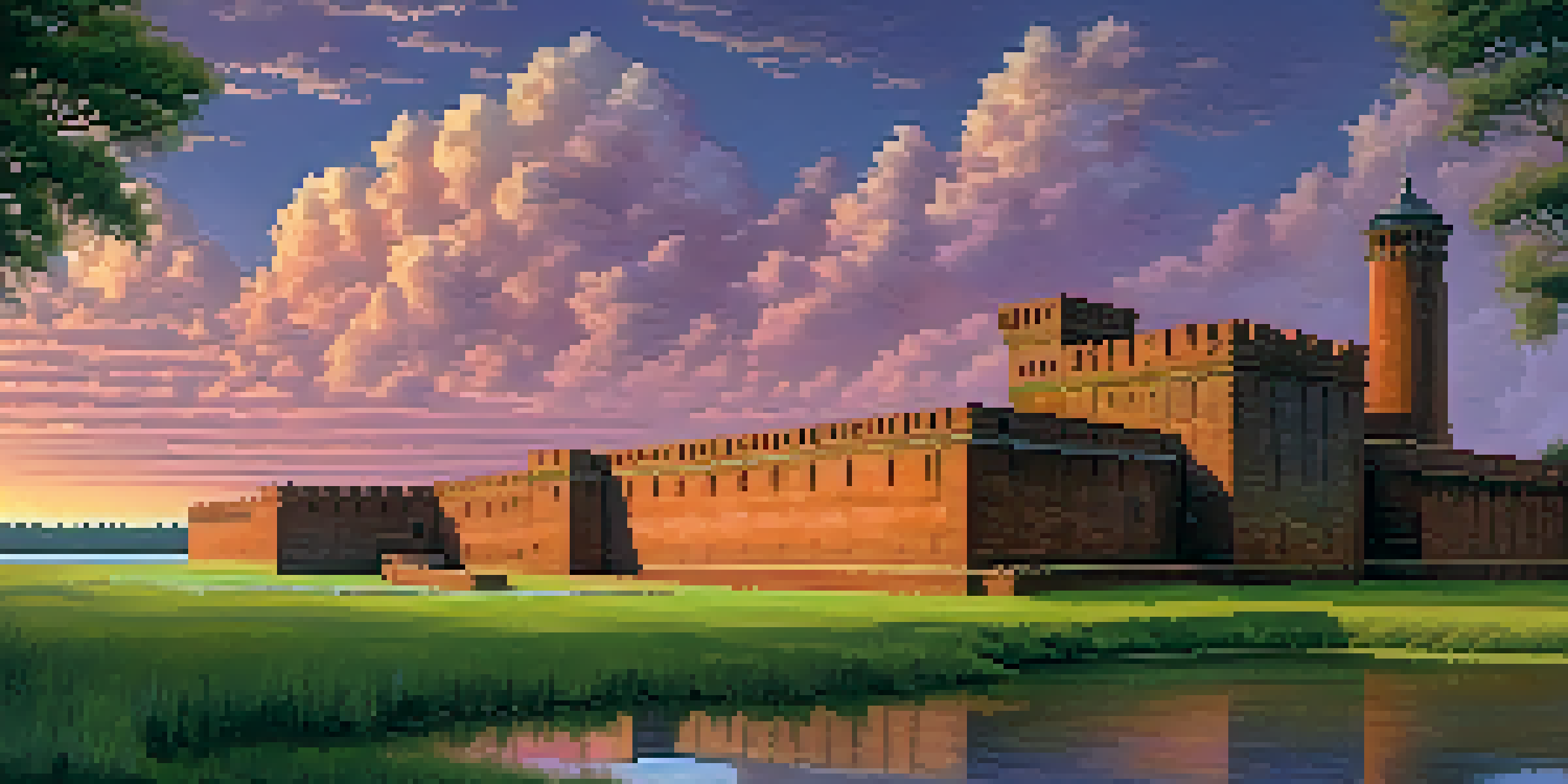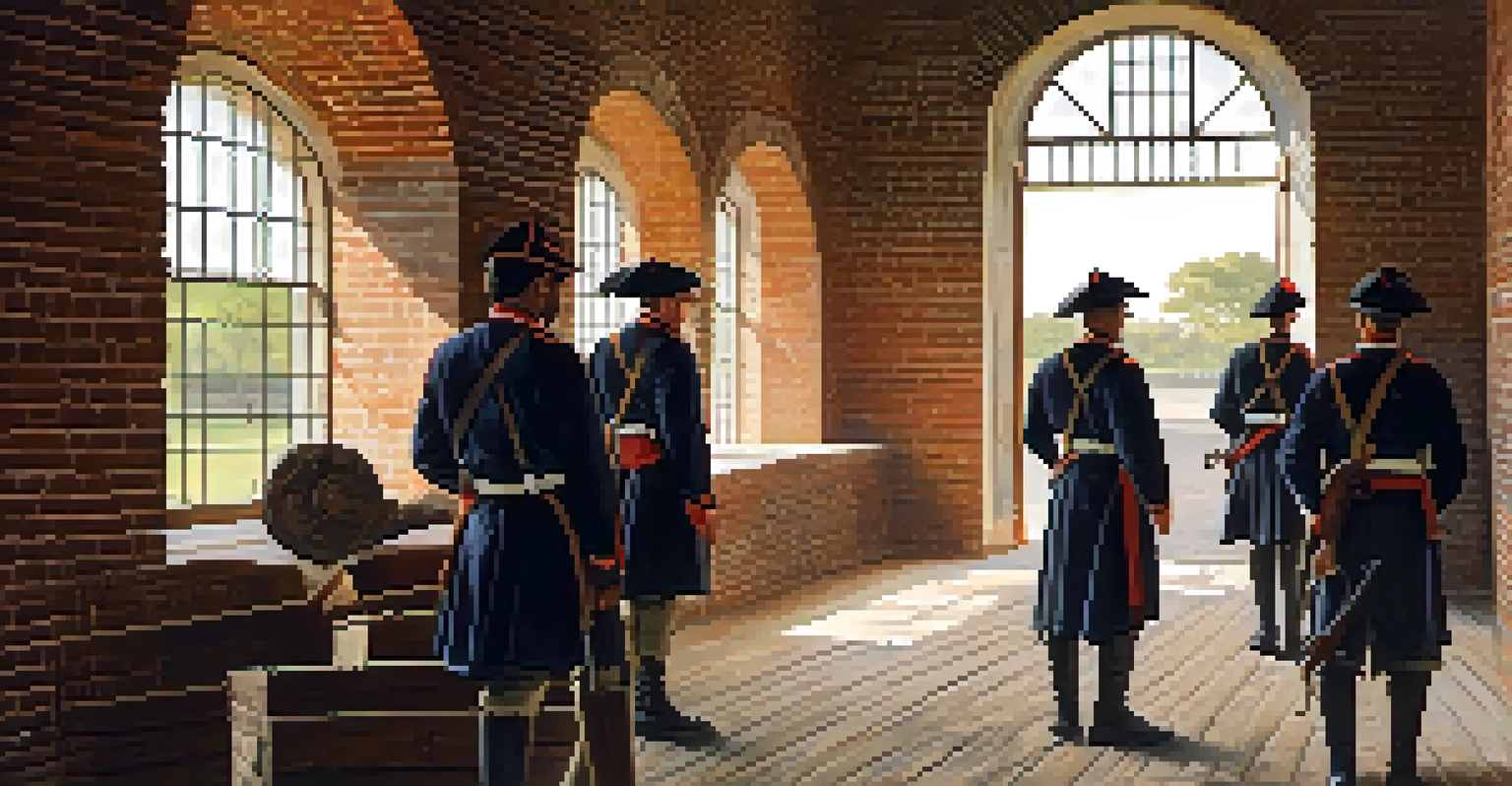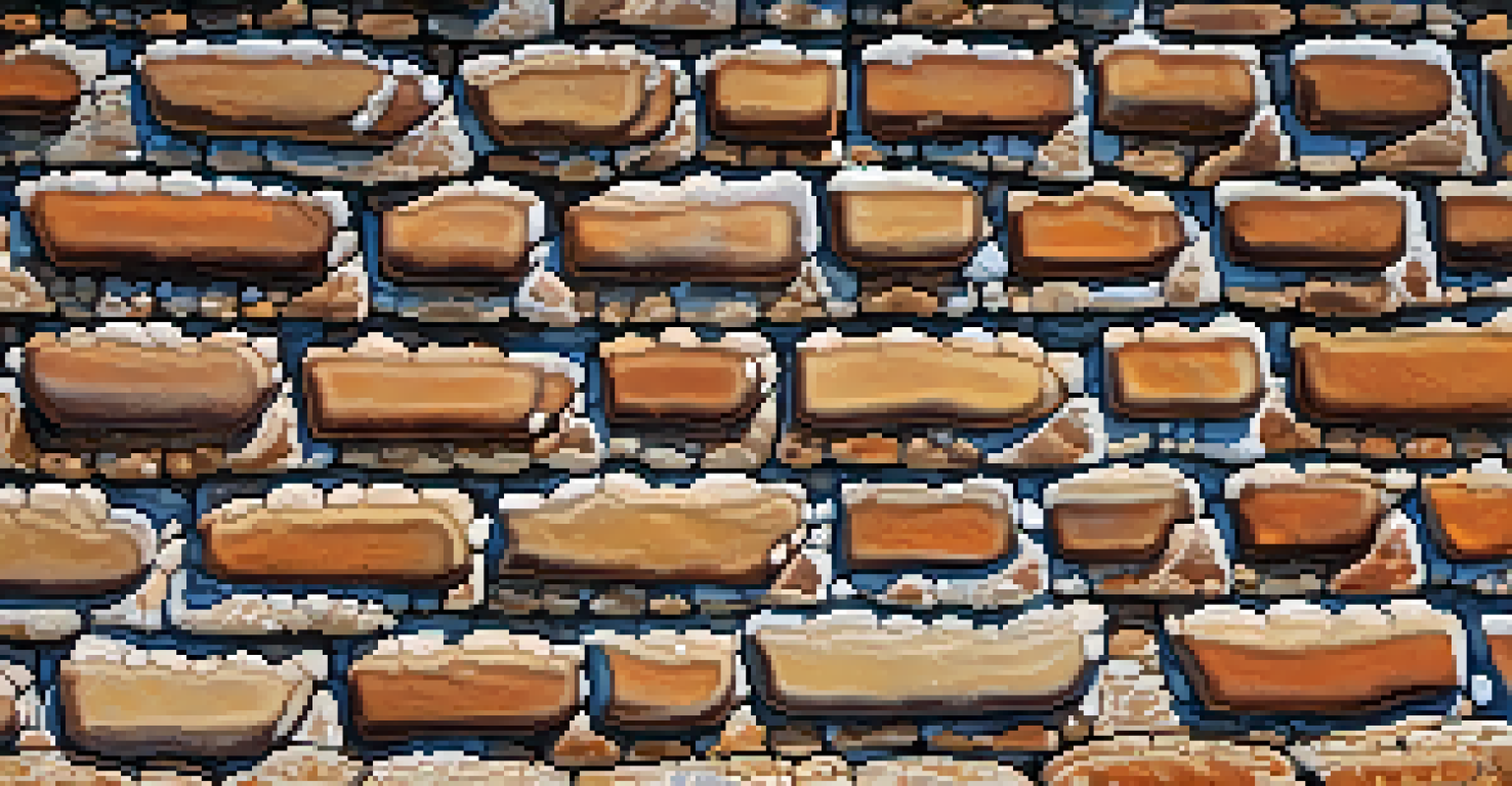Fort Pulaski: A Fortress of Civil War History

Introduction to Fort Pulaski and Its Significance
Fort Pulaski, located near Savannah, Georgia, is a remarkable piece of Civil War history. Constructed between 1829 and 1847, this brick fort was designed to protect the city from naval attacks. Its strategic position along the Savannah River made it crucial during the conflict between the North and South.
History is not a burden on the memory but an illumination of the soul.
The fort is named after Casimir Pulaski, a Polish nobleman and hero in the American Revolution. Today, it stands as a symbol of resilience and military ingenuity, showcasing the architectural advancements of its time. Understanding its purpose offers insight into the broader context of the Civil War and the importance of coastal defenses.
Visiting Fort Pulaski allows guests to step back in time, exploring the very grounds where significant military strategies unfolded. It serves as a reminder of the sacrifices made during a tumultuous period in American history, making it a must-see for history buffs and casual visitors alike.
Architectural Marvel: Design and Construction
The design of Fort Pulaski reflects the innovative military architecture of the 19th century. Constructed primarily from tabby, a concrete-like material made from oyster shells, the fort was built to withstand artillery fire. Its walls measure up to 7 feet thick, showcasing the engineering prowess of its time.

The fort features a unique star-shaped layout, which was a popular design for coastal fortifications. This shape allowed for better coverage against potential attacks from multiple angles. Additionally, the fort's moats and drawbridges added layers of defense, making it a formidable stronghold.
Fort Pulaski's Historical Importance
Fort Pulaski serves as a significant symbol of Civil War history, illustrating the strategic military efforts and sacrifices made during this tumultuous period.
As you walk through the fort today, you can still see the remnants of its construction and the careful planning that went into its defenses. This architectural marvel not only served a military purpose but also stands as a testament to the craftsmanship of the era.
The Role of Fort Pulaski in the Civil War
Fort Pulaski played a pivotal role in the Civil War, particularly during the early stages of the conflict. In January 1861, Georgia seceded from the Union, and the fort became a Confederate stronghold. Its location made it a key asset for controlling the waterways around Savannah and protecting the city from Union forces.
The past is never dead. It's not even past.
However, in April 1862, Union forces began a siege that would ultimately lead to the fort's surrender. The Union troops employed innovative artillery techniques, including rifled cannons, which proved devastating against the fort's defenses. After just 30 hours of bombardment, the Confederate forces surrendered, marking a significant victory for the Union.
This battle not only changed the control of the region but also demonstrated the effectiveness of new military technology. The fall of Fort Pulaski opened the way for Union forces to advance deeper into the South, altering the course of the war.
Life Inside Fort Pulaski: Soldiers and Daily Routine
Life inside Fort Pulaski was anything but simple. Soldiers stationed there faced the challenges of military life, including drills, maintenance duties, and the ever-present threat of attack. The fort housed both officers and enlisted men, each with specific roles that contributed to its overall function.
Daily routines included long hours of training and preparing the fort for potential sieges. Soldiers would also engage in various chores, such as cleaning the cannons and ensuring the fort was adequately supplied. This regimented lifestyle fostered camaraderie among the troops, creating a sense of brotherhood even in challenging times.
Innovative Military Architecture
The fort's unique design, featuring thick walls and a star-shaped layout, showcases the architectural advancements of the 19th century and its purpose as a stronghold.
Despite the hardships, there were moments of respite where soldiers could bond and share stories. These interactions humanized the experience of military life, reminding us that behind the walls of this stronghold were individuals with hopes, dreams, and families waiting for their return.
The Historic Siege: Tactics and Strategies
The siege of Fort Pulaski was a masterclass in military strategy, showcasing the evolution of warfare during the Civil War. Union forces, under the command of Brigadier General Quincy Adams Gillmore, utilized advanced artillery tactics that had never been seen before. The rifled cannons allowed for greater accuracy and range, which played a crucial role in the siege's success.
Gillmore's troops meticulously positioned their artillery to target the fort's weaknesses, demonstrating a strategic approach to warfare. They aimed to destroy the fort's capabilities without incurring heavy casualties. This innovative strategy ultimately led to a swift and decisive victory for the Union forces.
The fall of Fort Pulaski highlighted the changing nature of war, where technology and strategy began to take precedence over sheer numbers. It serves as a reminder that the tactics employed during this time would shape future military engagements.
Preservation Efforts: Fort Pulaski Today
Today, Fort Pulaski is preserved as a national monument, allowing visitors to experience its rich history firsthand. The National Park Service has undertaken significant restoration efforts to maintain the fort's structure and educate the public about its historical significance. Guided tours and interpretive programs provide insights into both the fort's architectural marvels and its role in the Civil War.
Visitors can explore the fort's grounds, walk through its tunnels, and even witness cannon demonstrations that showcase the military practices of the era. These activities not only educate but also engage the public, making history come alive in a meaningful way.
Engaging Visitor Experience Today
Visitors to Fort Pulaski can explore its grounds, enjoy informative exhibits, and participate in demonstrations that bring the fort's rich history to life.
By preserving Fort Pulaski, we honor the past and ensure that future generations can learn from its lessons. The fort stands as a powerful reminder of the complexities of war and the importance of protecting our historical landmarks.
Visiting Fort Pulaski: What to Expect
If you're planning a visit to Fort Pulaski, you're in for a treat! The fort is located within a beautiful natural setting, surrounded by marshes and scenic views. As you approach, the impressive structure stands tall, inviting you to explore its storied past.
Inside, you'll find informative exhibits that detail the fort's history, along with its role in the Civil War. The friendly park rangers are always eager to share stories and answer questions, enhancing your experience. Make sure to check the schedule for special events, such as living history demonstrations that bring the past to life.

Whether you're a history enthusiast or just looking for a unique outing, Fort Pulaski offers something for everyone. Prepare to immerse yourself in the past and gain a deeper appreciation for the sacrifices made during this pivotal time in American history.